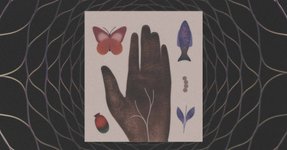Sublime
An inspiration engine for ideas
Pretty soon after cells started joining together to form animals, some of the animals discovered that they could go up another level of emergence and form even bigger giants made up of multiple animals. If you look around, you’ll see them everywhere—schools of fish, packs of wolves, colonies of ants, waddles of penguins. Groups like these represent... See more
Tim Urban • A Game of Giants — Wait but Why
The teeming hordes of living things on Earth, not only in space but in time, are actually all one massive, single organism just as certainly as each one of us (in our own minds) seems to be a distinct human being throughout our limited lifetime... Each of us is, equally, an independent living human and also just one utterly minute, utterly brief... See more
Maria Popova • Notes on Complexity: A Buddhist Scientist on the Murmuration of Being
SOCIAL INSECTS BELIEVE in division of labor. Early on, scientists coined the term “superorganism” to describe a collective in which each individual is part of a greater whole.
Peter Wohlleben • The Inner Life of Animals: Love, Grief, and Compassion—Surprising Observations of a Hidden World


It would not be inaccurate to characterize an organism as an embodied energy-extraction and threat-avoidance program.
Bobby Azarian • The Romance of Reality: How the Universe Organizes Itself to Create Life, Consciousness, and Cosmic Complexity
Some researchers use the term ‘holobiont’ to refer to an assemblage of different organisms that behaves as a unit.
Merlin Sheldrake • Entangled Life: How Fungi Make Our Worlds, Change Our Minds and Shape Our Futures
What would be possible if each of us thought of ourselves primarily as cells in a living community, driven by discovery of and collaboration with the larger whole(s) of which we are essential components?
Medium • Humanity, the Ecosystem
That makes fungi the largest known living organisms in the world.